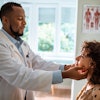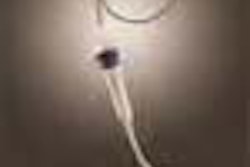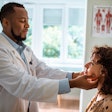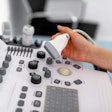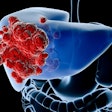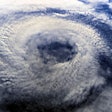SAN FRANCISCO - Used extensively in anesthesiology and cardiology, medical simulation can also successfully test the ultrasound skills of residents, according to a presentation Monday at the American Institute of Ultrasound in Medicine conference.
"Ultrasound is really an art form. The images you get depend on the people doing the imaging. When residents come through in rotation, the case mix depends on chance," said presenter Dr. Harvey Nisenbaum from the University of Pennsylvania Medical Center in Philadelphia. "A combination of clinical experience and a more structured educational process would be more helpful for evaluation."
In this pilot study, 25 radiology students at different levels of training, first year through fourth year, used an ultrasound simulator called UltraSim to complete five acquisition tasks: evaluating the upper abdomen including the liver, gall bladder and right kidney measurements; differentiating parts of the pancreas; a gynecological exam to obtain a sagittal image of the uterus as well as the endometrium; imaging the abdomen and bladder of a third-trimester fetus; and a pelvic study of a first-term pregnancy.
Manufactured by MedSim of Kfar Sava, Israel, UltraSim is equipped with a system simulator with B-mode, color, and spectral Doppler modes, and a generic control panel. Real-time scanning is performed on a mannequin.
Ultrasound images appear on the monitor, as in actual scanning. Each image was digitally stored and randomized, and then compared to an "ideal" answer key provided by the manufacturer, Nisenbaum said. Two experienced sonologists read the student's images and graded them on a five-point scale, one designating those that did not meet requirements or did not demonstrate understanding of the task, and five given to those with the best technique and measurements within 1 mm of the ideal. The residents also filled out a questionnaire rating UltraSim.
Case scores were the average of the five task scores. Both readers demonstrated a high level of agreement, scoring 91.3% of the images either identically (51.6%) or within a one-point difference (39.7%). Scores across all cases demonstrated a pattern of improvement from first to second year. Acquiring images of the pancreas and the first-term pregnancy proved to be the most difficult for the residents, with an average score of 3.74.
The results were reflective of how resident rotation is organized at the hospital, Nisenbaum explained. First-year residents do three rotations, for a duration of one month in each of the different modalities. By the third year, residents are on night call and will have completed several ultrasound rotations. In the fourth year, there is little night call and limited scanning since the last ultrasound rotation, Nisenbaum said.
Based on the results of the questionnaire, the students highly rated UltraSim as a tool that can be incorporated in professional licensure and board exams, he said.
Nisenbaum concluded that more studies with a larger number of residents would be valuable. In addition, he said he would like to see a better case selection with more difficult tasks, such as an ectopic pregnancy. The ability to change the habitus of the mannequin also could be useful, noted session moderator Deborah Sansoucie.
By Shalmali Pal
AuntMinnie.com staff writer
April 4, 2000
Let AuntMinnie.com know what you think about this story.
Copyright © 2000 AuntMinnie.com



